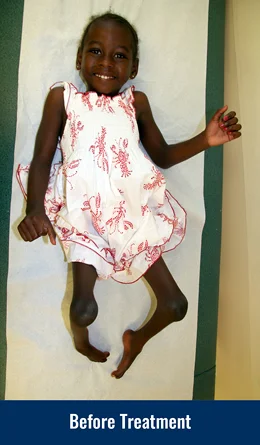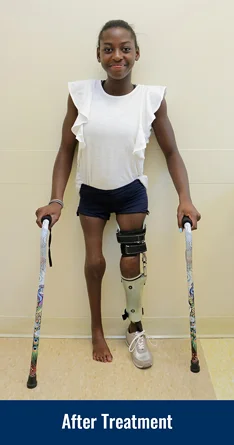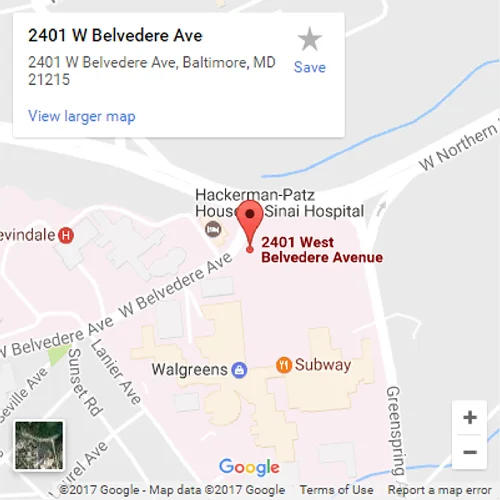Arthrogryposis
What is arthrogryposis?
Arthrogryposis, also known as arthrogryposis multiplex congenita or AMC, is a birth defect in which a child has various joints that are tight (contracted) with decreased motion, stiffness, deformity and difficulty with function. The incidence for this is one in 3,000 live births. It is not a progressive disorder. In some cases, arthrogryposis is inherited and is passed from one generation to the next. In other cases, there is no explanation for the decreased movement of the fetus while in utero. Arthrogryposis encompasses a spectrum of musculoskeletal joint contractures from general joint immobility/tightness to rare syndromes creating difficulty with walking, mobility and function. The one thing that they all have in common is weak muscles and stiff joints.
How is arthrogryposis diagnosed?
Arthrogryposis may be diagnosed in utero by prenatal ultrasound. Genetic testing may be necessary to determine if there is a genetic abnormality or inheritance pattern. It is important to determine whether those affected with arthrogryposis have additional neurologic involvement. During pregnancy, mothers of arthogrypotic babies may report absent or decreased fetal movements.
How is the body affected by arthrogryposis?
There are a spectrum of arthrogrypotic types which affect the musculoskeletal system in different ways. The spine may have a curvature or scoliosis. The upper and/or lower extremities may be affected throughout, including shoulder, elbow, wrist, fingers, hips, knees and ankles. In some cases, only the hands and feet may be affected. Arthrogryposis may be a part of a syndrome where there are multiple joint contractures, (e.g., cervical spine, wrist, hips, and knees).
A person with arthrogryposis may have congenitally dislocated hips, clubfeet or congenital vertical tali (rocker-bottom feet). Upper and lower extremities may be held in specific postures revealing typical patterns seen in people with this problem. Straightening or bending of elbows, wrists, hips and knees may be difficult. These joints may reveal smooth, tight skin instead of creases that are normally seen about the joints. There may be skin webbing at the elbow and knee joints. Normal skeletal muscle may be replaced with abnormal fibrous and fatty tissue.
How is arthrogryposis treated?
Nonoperative treatment for arthrogrypotic contractures is minimally effective in regaining motion and improving function in large joints such as the hips, knees, shoulders and elbows. Physical and occupational therapy can help with improving range of motion of joints, mobility, function and activities of daily living. Bracing for the hands, and casting for clubfeet often helps to stretch the wrists and feet into better positions. Long-term bracing is required to maintain the gains.
Surgical intervention may be necessary to improve motion in joints and correct deformity. Successful treatment corrects deformity and improves motion and normal mechanical alignment. This leads to better ambulation and function. Lower extremity surgery has been proven to improve function and pain. This may require lengthening of tight/shortened tissues (tendons and ligaments) or removing small wedges from near the joints (shortening osteotomy) to regain better positions. Even if surgery is performed, there is usually a need for continued brace wear, use of assistive devices, physical therapy and occupational therapy to maintain motion gained and to assist with ambulation, mobility and activities of daily living.
Why choose the International Center for Limb Lengthening for treatment of arthrogryposis?
Deformity correction is a complex process. Your doctor at the International Center for Limb Lengthening will take the time to make sure you understand all your options and then will customize your treatment to meet your specific needs. Our patients benefit from our team-centered approach with world-renowned surgeons and specialized physician assistants, nurses and physical therapists. We help patients with arthrogryposis achieve their best possible result.
Chat with a doctor about arthrogryposis
Our doctors hold free monthly chats on various subjects, including arthrogryposis. Click here for more information about our monthly chats.



